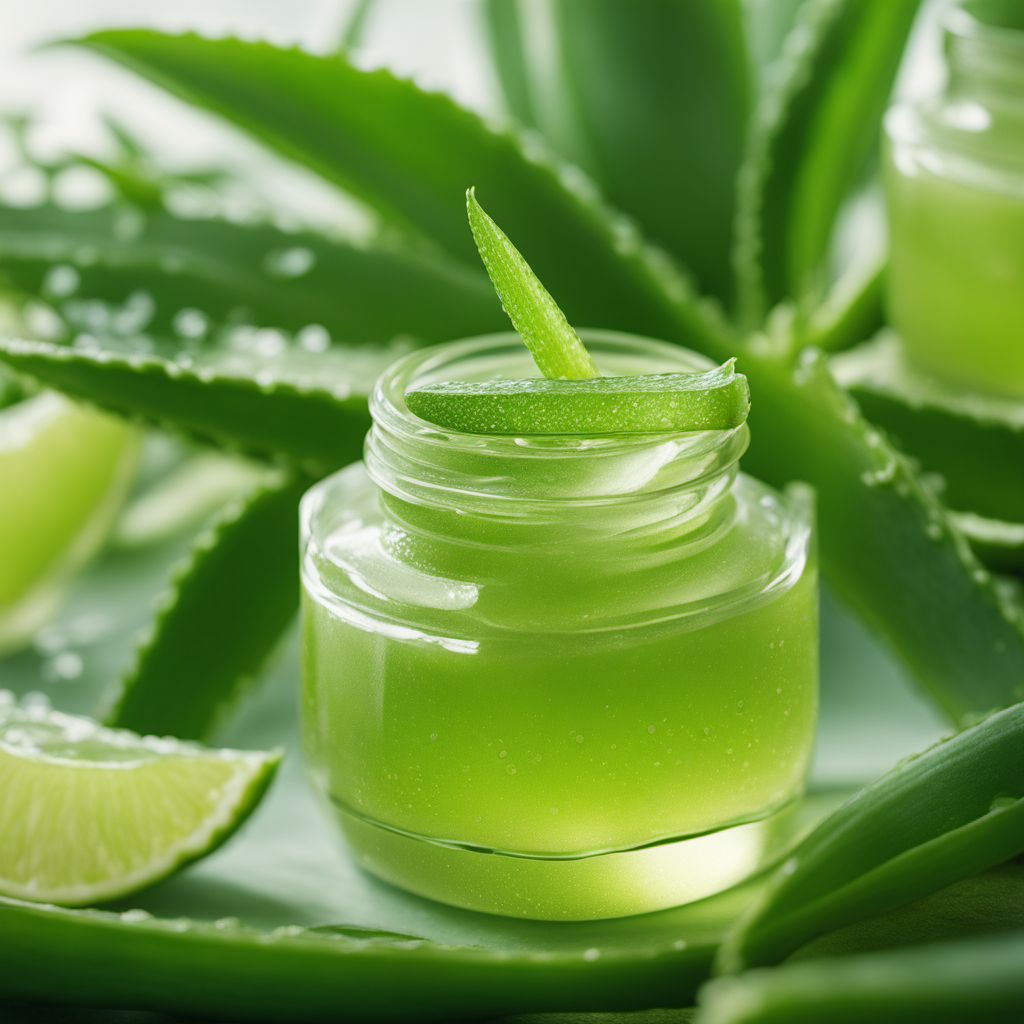
Ingredient
Aloe vera juice
The Healing Elixir
Aloe vera juice is made from the gel-like substance found inside the leaves of the aloe vera plant. It has a slightly tangy and refreshing flavor, reminiscent of citrus, with a smooth and slightly viscous texture. Aloe vera juice is often consumed for its potential health benefits and is used as a base for various beverages and smoothies.
Origins and history
Aloe vera is believed to have originated in the Arabian Peninsula and has been used for its medicinal properties for thousands of years. It has a rich history in ancient civilizations, including Egypt, Greece, and China, where it was revered for its healing properties. Today, aloe vera is cultivated in many parts of the world, including North America, South America, Africa, and Asia.
Nutritional information
Aloe vera juice is low in calories and fat, making it a popular choice for those looking for a healthy beverage option. It is also rich in vitamins, minerals, and antioxidants, including vitamin C, vitamin E, and beta-carotene. Aloe vera juice is known for its potential digestive benefits and may help support a healthy immune system.
Allergens
Aloe vera is not known to be a common allergen. However, individuals with allergies to plants in the Liliaceae family, such as onions or garlic, may also be sensitive to aloe vera. It is important to exercise caution and consult a healthcare professional if you have any known allergies or sensitivities.
How to select
When selecting aloe vera juice, look for products made from 100% pure aloe vera gel without any added sugars or artificial ingredients. Choose reputable brands that prioritize quality and transparency in their manufacturing processes. It is also advisable to check the expiration date and storage recommendations on the packaging.
Storage recommendations
To maintain its freshness and quality, store aloe vera juice in the refrigerator at a temperature between 32°F and 38°F (0°C and 3°C). Once opened, consume it within a week to prevent spoilage. It is important to follow the storage instructions provided by the manufacturer to ensure optimal shelf life.
How to produce
Aloe vera plants can be grown at home with proper care and maintenance. They require well-draining soil, ample sunlight, and regular watering. Harvesting aloe vera gel can be done by carefully cutting open the leaves and extracting the gel-like substance inside. However, it is important to research and follow proper techniques to ensure the plant's health and longevity.
Preparation tips
Aloe vera juice can be consumed as is or used as a base for various beverages and smoothies. It can also be added to salad dressings, marinades, or sauces for a tangy twist. When using aloe vera juice in recipes, start with small amounts and adjust according to taste. It is important to note that excessive consumption of aloe vera juice may have laxative effects, so moderation is key.
Culinary uses
Aloe vera juice is commonly used as a health drink, consumed for its potential digestive benefits and overall wellness support. It is also used as a base for smoothies, mocktails, and herbal teas. In some cultures, aloe vera juice is incorporated into traditional remedies or used topically for skincare purposes.
Availability
Aloe vera is cultivated in various regions around the world, including North America, South America, Africa, and Asia. It is commonly found in countries like the United States, Mexico, India, China, and Brazil.
